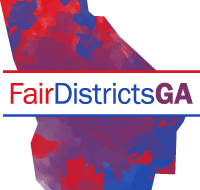Postcard Party Toolkit
Postcard parties have been used for years to send messages, and they work! This document focuses on an in-person postcard party. For a virtual event, see Managing Postcarding in Time of Covid-19. There are two major kinds of postcard parties.
1. Writing to elected officials: Participants write short messages to their elected officials. This is a creative, easy way to make your voices heard. It lets officials know your wishes, especially when you want them to act or vote a certain way.
2. Writing to members of your community: Participants write short messages to people in the community urging them to take a specific action on an issue, like making calls or voting in an upcoming election. When people receive personal handwritten postcards, they are more likely to act on the issue. This type of postcard party is strategic when you are reaching out to new people or encouraging people to vote.
How it Works
1. Invite family, friends, group members, and others to your home, a local coffee shop, restaurant with a quiet room or space, or to another gathering place.
2. Start off with a conversation about the issues and what is at stake. Jot down some questions or talking points beforehand to get the conversation moving.
3. Write your postcards. Aim for each person to write 10 postcards. The messages should be short and clear. Two to five sentences should suffice. Make sure you have enough materials on hand. A list of essential items is below.
4. Collect the postcards and encourage participants to host their own postcard parties.
5. Mail the postcards. Be strategic about the timing. If you are writing legislators to vote a certain way you want the postcards to reach them a few days before any crucial votes.
Before the Party
Components of a Postcard Message
Example #1: Elected Official
Example #2: Member of the Community
Postcard Party Checklist
Collect these things before the postcard party (see Postcard Party Checklist below)
Postcards. You can buy blank postcards or create and print your own. Make sure you have at least 10 cards per person.
Address lists. If writing postcards to members of a legislative committee, you can find the names and addresses online. If writing postcards to get out the vote for a specific candidate, the candidate may be able to provide the addresses.
Writing instruments. Pens and highlight markers.
Sample postcard messages or script. Distribute suggested writing points for your volunteers to use when completing their postcards. This will help get the pens moving and the creative energy flowing.
A clear and unambiguous request. “Vote for the non-partisan Democracy Act.”
Quality of handwriting is vital to it being read; make it short, neat, and legible.
Decorations, stickers, multiple colors can be polarizing; limit to two colors, highlighter.
Address the recipient: “Dear Samuel” or “Dear Valued Voter.”
Begin with if possible “I am a volunteer asking you to vote for XX.”
If asking person to vote for a candidate give a few facts, qualities/policies to show why.
Partially preprinted postcards are great if it has some space for a handwritten message.
Personalize your message. State why the issue is important to you, your family, or your community. Space is limited so give one reason per card. Here are some suggestions:
Every vote should count – equally – including mine.
Gerrymandering discourages creative problem solving.
When politicians choose their voters, they do not listen to all their constituents.
The Democracy Act puts democracy back in the hands of Georgia voters.
State your tie to the legislator. State it in text on postcard or with your signature. “I am a constituent.” OR “I am a citizen of GA.” OR “I canvassed for you in your last election.”
Restate your ASK. “Please vote for redistricting reform.”
Give a thank you and identify as a voter/neighbor/constituent. “Thank you, Mary Smith, your Constituent” or “Thank you, Mary Smith, a GA voter” or “Thank you, Mary Smith, 30345 (zip code).”
I urge you as a member of the Senate reapportionment committee to vote for the Democracy Act. District maps should be drawn with public input to ensure that every vote counts, including mine.
Thank you,
Mary Smith, your Constituent 30345
I urge you to vote for the non-partisan Democracy Act resolution on the ballot. Gerrymandering is a form of voter suppression. Every vote should count – yours and mine. Thank you for your YES vote,
Mary - 30345 your neighbor
Following is a checklist of things that need to be done. There may be times when responsibilities shift so leaders should talk prior to any event to determine who will do what.
Chairperson
1. Advertise the postcard party
Write Facebook post, Create event on FB
Send an email
2. Bring:
Sign-in sheets, clipboards
Buy, print, and bring Postcards
Buy and bring stamps
Scripts
Pens, colored markers
Name Tags
3. At the meeting, welcome the group. Talk about passing the hat and need for contributions to cover costs of postcards and stamps. Go around to tables and say hello to everyone, introduce self to newcomers
Co-Lead:
Set out postcards, scripts, stamps, etc. on tables in batches prior to the event
Give instructions to participants about materials, tools, event purpose.
Pass around and collect sign-in sheets.
Ensure that Pass the Hat container is circulated.
Make sure that everyone has postcards, stamps, scripts, and pens.
Provide instructions and materials to latecomers.
Site coordinator:
Call location and book event
Bring a container for Pass the Hat; take the container home and count money
Photographer:
Take pictures during the meeting
Work with leaders to post on Facebook, Twitter, and other Social Media
